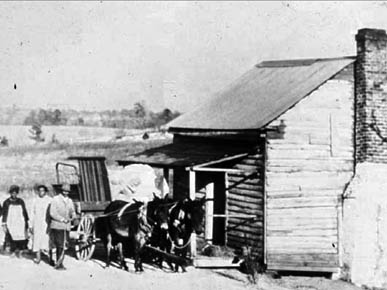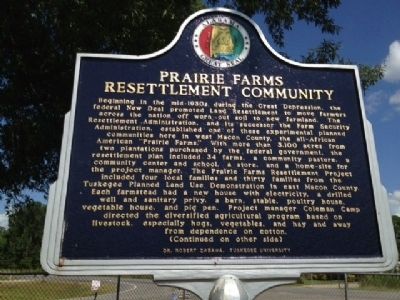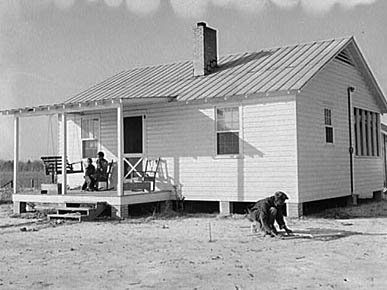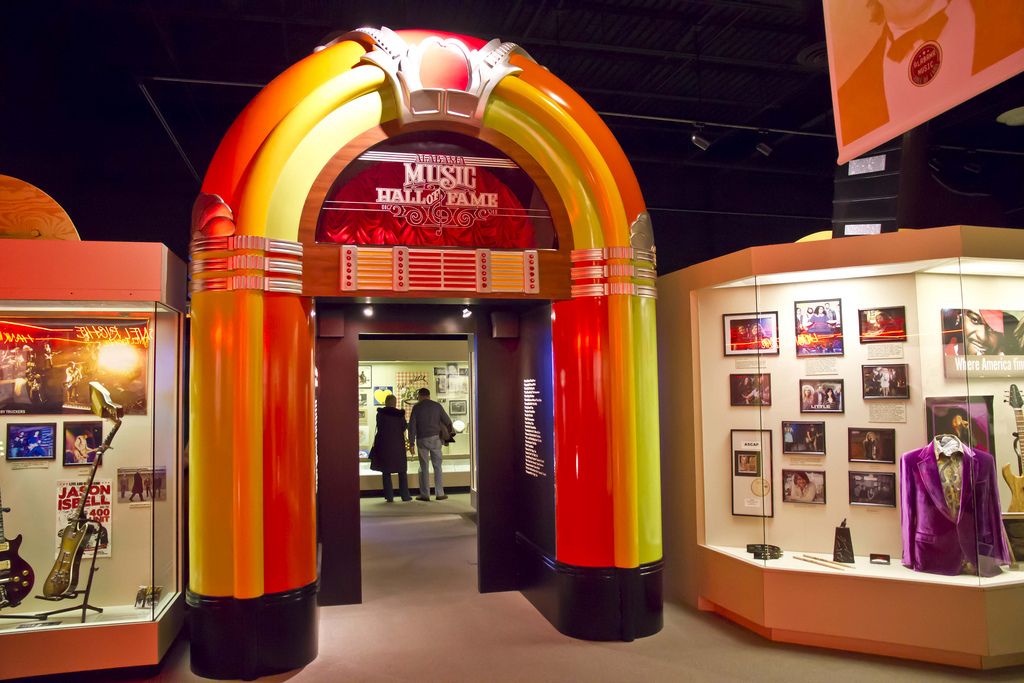The Prairie Farms Resettlement Community Is One of Alabama's Best Kept Secrets
The Prairie Farms Resettlement Community is one of the best kept secrets in Alabama, as most people have never heard about it.
This includes lifelong residents of the state, but it was a very real part of the history of Alabama.
Located in Macon County, it was one of the several planned communities that were established by the federal government during the Great Depression.
 The Prairie Farms Resettlement Community
The Prairie Farms Resettlement CommunityHowever, much like a lot of the government plans during what was referred to as the New Deal Policies, it was destined to fail.
But did it?
The History of the Prairie Farms Resettlement Community
 The Prairie Farms Resettlement community Marker
The Prairie Farms Resettlement community MarkerThe Prairie Farms Resettlement Community eventually became home for 34 African American families in the mid 1930’s.
They were basically driven out of the small homesteads that they had, by the Governments plans for the Tuskegee National Forest.
The goal of the Government at the time was to create numerous projects that would help to develop both rural and economic growth in the country.
It was linked to the RA, known as the Resettlement Administration, and the FSA, known as the Farm Security Administration.
Most all of these projects were located in 10 southern states including Alabama, and while some were for whites only, most were for African Americans.
A lot of people say this was the precursor to our current welfare programs, but in reality, they really helped the people involved with these projects.
This resettlement program was actually one of the two federal programs that affected impoverished people in Macon County.
The first was the Tuskegee Planned Land Use Demonstration, also known as the TPLUD, which began in 1935.
Its original plan was to purchase 40,000 acres of what was considered unproductive land, and then relocate the people that lived there.
However, due to budget cuts, only 10,000 acres were purchased, and this purchase was under the direction of the Tuskegee Institute who acted as its overseeing agency.
It had an all-African America management team, which the government thought would understand the needs of these displaced people.
Also, in its original agenda were plans to relocate or resettle 133 families, and 121 on these families were African Americans that were considered “improvised”.
The Prairie Farms Resettlement Community plans “refocused” again in 1935 and changed their estimates to only 75 families.
These families were living in what is referred to as the “Black Belt” region of south-central Alabama, and the plan was to place them on separate farms.
These farms were to be located in existing communities, but the plan changed yet again.
In 1936 it shifted to a “group settlement” plan, where these relocated people would be working together instead of working separately.
By the year 1937, the number of displaced families to be located shrank to 30, and the Prairie Farms Resettlement Community was officially formed.
How the Prairie Farms Resettlement Community Worked
 Picture of a Prairie Farms Resettlement Community House
Picture of a Prairie Farms Resettlement Community HouseThe Prairie Farms Resettlement Community was eventually relocated to land that was situated about midway between Tuskegee, and the capital city of Montgomery.
It was officially under the direction of the Tuskegee Planned Land Use Demonstration and included 37 farms.
These farms ranged in size from 41 acres to 135 acres and included two community pastures and a community center.
In 1937, the first of the 30 families arrived, and they were joined by 4 families who had been former tenant farmers on nearby plantations.
These families lived in temporary housing until their new “project houses” were built, which would include a barn, a stable, a vegetable house, and a pig pen.
One of the major components of this Community was its Cooperative Association.
This Association would have a community ran store, a feed and grist mill, a canning plant, and a cane mill.
It would also have a hay baler, tractors and plows, as well as mowing machines these new farmers could use.
It also operated a 550-acre community pasture and offered these new farmers the ability to buy farm crops, livestock, as well as equipment.
Once these replaced settlers arrived, they were given a lease-purchase agreement from the United States Government, at very low interest rates.
This program was directed by the Tuskegee Graduate Coleman Camp, and its sole goal was to teach self-sufficiency.
They were to help these new settlers understand how to run a farm and become successful by raining hogs, vegetables, as well as hay.
This would be challenge as most of the impoverished African Americans knew only one thing about farming; how to plant, grow, and harvest cotton.
However, this transition did not go as the Tuskegee Graduate Coleman Camp planned it would.
In the first year of operation, these new farms could not meet their financial obligations to the Federal Government as planned.
However, the Government planned for this, as they figured that it would take a couple of years for these new farmers to succeed.
Another major part of Prairie Farms Resettlement Community was the school it established, the Tuskegee Institute Prairie Farms Laboratory School.
Its goal was to teach the children of these families how to succeed in the farming business with basic skills, and it was set up to teach 175 students.
Once it was opened, it actually had 213 students that were enrolled from these families, as well as from other farm families in the area.
Its focus was the 1st grade to the 9th grade, and to teach these students the basics of math, reading, writing, and how to handle basic problems.
The Tuskegee institute provided the teachers who were students majoring in education, as well as supplies and transportation.
They also supplied student teachers from the Booker T. Washington School on Wheels, to help teach these students about agriculture.
The building the school was located in also served as a community center where the farmers could hold meetings, and also offered a hot-lunch program for the students.
It also offered evening classes for the adults to help teach them basic skills, as well as extensive agriculture education.
However, all of this was about to change when World War II broke out, as politicians not sold on what they called “liberal social programs” pushed back.
They wanted to end these programs politically as well as financially, but the program survived and continued for a few more years.
In the year 1944, the FDA sent a report to Congress that the Prairie Farms Resettlement Community was successful.
However, in the same year, three of the farms were sold by the Government to private owners, and it did not end there.
By the year 1947 more than 70 percent of these community farms were sold, and the last farms were sold in 1951.
While many considered this program an overall failure, to thousands it was not.
The reason for this was simple to them; several African Americans received benefits, training, and education they otherwise would have never received.
There are hundreds of children of these original “resettled” farmers that that have passed the skills they learned to their children, and they are still farming today.
This success makes the Prairie Farms Resettlement Community one of the best the kept secrets in Alabama.
References
http://www.encyclopediaofalabama.org/article/h-2148
The Best Kept Secrets In Alabama

Alabama Gift Store
Numerous Items for You and Your Family to Enjoy
See it here at the Gift Store
Copyright 2019-2023 Alabamabackroads.com
All Rights Reserved



















